Le Havre, France – the largest port city, the architecture of which is characterized by large-scale buildings, strict and concise lines, as well as a complete lack of pomposity. Here you can taste delicious apple cider, walk through museums, wander thoughtfully along the “coast of desert waves”.
General information
Le Havre is a city at the mouth of the Seine River (northern part of the country, the English Channel coast, Haute-Normandy region). The population for 2023 is about 173 thousand inhabitants. The area is 46.95 km2. The city, built in 1517 on the site of a fishing village by order of King Francois I, has long served as a port for the French capital. It was here that sea vessels loaded goods onto river vessels going further to Paris.
Historical background
Le Havre had many trials, but the most difficult page in his biography was September 1944. Then, in just 2 days, British pilots destroyed the city to the ground and left more than 80 thousand people homeless.
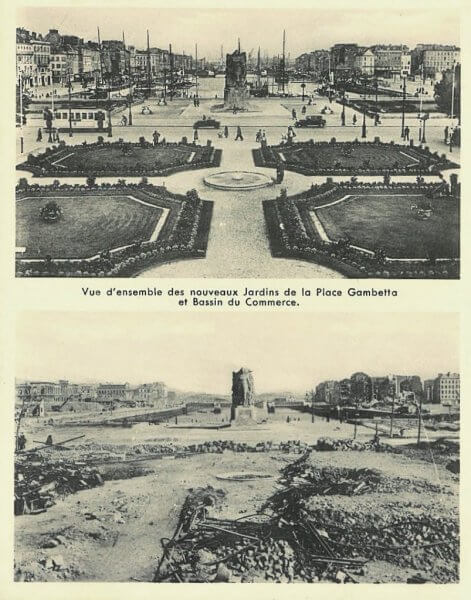
On that autumn day, the usual life of the townspeople ended. Several thousand civilians were killed in the airstrikes, and there were no shops, schools, town halls, churches, or historical sites left in the city itself. A total of 12.5 thousand buildings were destroyed on an area of 150 hectares. All this had to be rebuilt.
After the end of World War II, the French government decided not to restore the city, but to build a new, more modern one in its place. In the world architecture, such drastic measures have not been taken before. The project of Auguste Perret, whose favorite building material was concrete, was chosen for the construction.
The 71-year-old architect was faced with a difficult task-to create a beautiful, large and functional settlement. And in the shortest possible time. Together with Perret, 60 other assistants worked on new Le Havre, who had extensive experience in the construction of concrete structures. The result of their efforts is a dynamic, modern and green metropolis with long and wide streets, large-scale squares, buildings made of cement, steel, gravel, and sand.
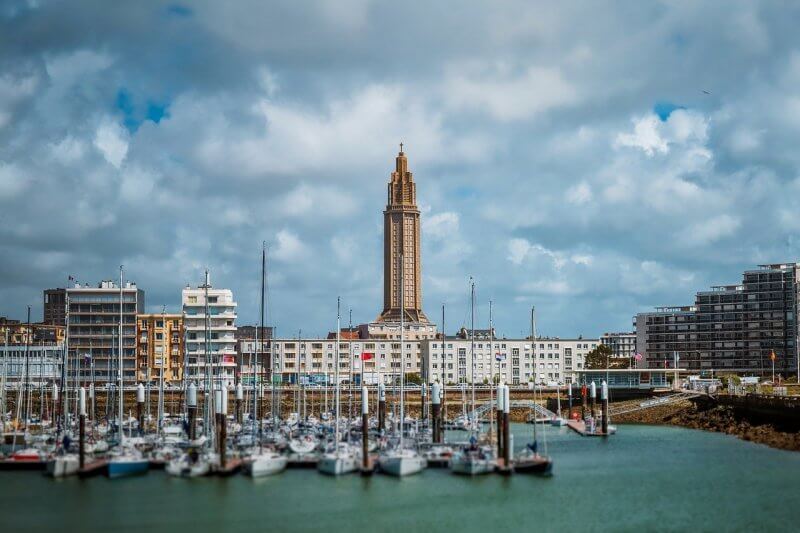
Today, Le Havre is considered the second largest port in France. There is a well-developed shipbuilding industry, as well as cement, chemical, cotton and oil refining industries. In Europe, it was unanimously recognized as phenomenal, and the complex of reinforced concrete buildings was included in the UNESCO World Heritage List in 2005.
Climate of Le Havre
The city of Le Havre is located in a temperate oceanic climate zone, so it is characterized by warm summers and cool winters. The best period for visits is June-August. During this period, heavy rains are rare here, and it is very warm outside (up to +20°C during the day and about +15°C at night). Swimming and sunbathing is best in July – this month is the hottest. However, it should be recognized that the waters of the English Channel are still not warm enough, so many vacationers prefer to just lie in the sun. Another advantage of summer is the large number of theater and music festivals, the opening of huge markets, and the organization of folk festivals.

In September, the weather in Le Havre is dry and pleasant. The thermometer stops at +16…+18°C – just the thing for exploring local attractions and walking along the bay. In addition, concerts are often held on the square in the first half of autumn. But by the end of October, precipitation is becoming more frequent, and it’s getting colder outside. At the same time, the number of tourists decreases. In winter, there is a lull in the city and only closer to May do travelers pack their bags again.
Meanwhile, during the low season, it is more than profitable to relax in Le Havre. All parks, museums and other attractions are operating normally, and the cost of renting housing is reduced by 30-35%. In addition, even in early spring, the city is already warm (+10…+12°C), and large-scale flower festivals are held on the streets.
Le Havre Attractions and Entertainment
Le Havre’s historic sights can be seen in the area between Bassin de la Manche and the harbour. With the latter, we will start exploring the main city objects
.Port du Havre

Port du Havre is a place with a special atmosphere, filled with hundreds of boats and fishing boats. It is the second largest port in France and the fifth largest in Northern Europe. It consists of terminals for various purposes, receiving about 35 thousand passengers and more than 120 cruise liners per year. The harbor is used not only for passenger traffic. It handles dry, liquid, bulk, ro-ro cargo, containers, etc. And is also a convenient starting point for sea cruises in Northern Europe. Flights to Deauville, Honfleur, Rouen and other French resorts are also organized from here. They cost from 45 €.
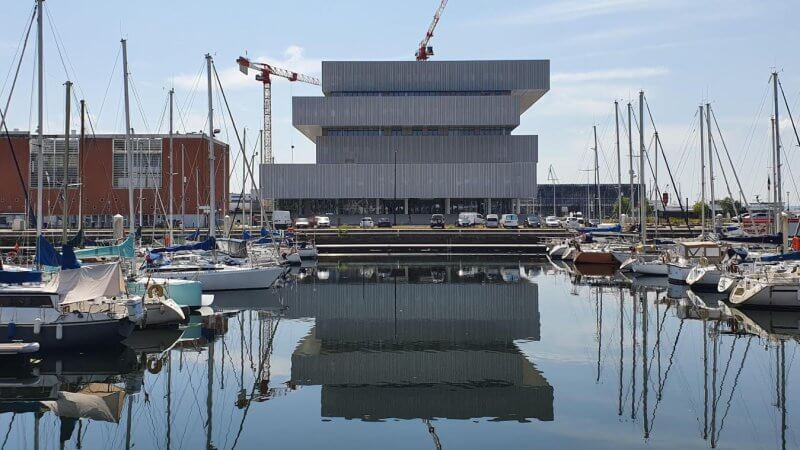
Port du Havre city center is 2.5 km away. Passengers are dropped off at 2 berths. From them you can walk (20-25 minutes), use the transfer of cruise companies (for some-free of charge, for others-from 10€) or take a shuttle ride (8€). In addition, near the port there are taxi stands (to the center – 8€, to the railway station – 10€), car rental points (from 90 € per day) and bicycles (10 € per day). You can get tourist services and learn more about the city, transport, excursions and attractions in the information center of the port.
St. Joseph’s Church
Another famous landmark of Le Havre is L’église Saint-Joseph du Havre, dedicated to the memory of those who died during the war. The architectural masterpiece designed by O. Perret is considered the main symbol of the restored city. Its octagonal lantern-shaped tower, lined with panels of colored glass, resembles a lighthouse. This white silhouette is visible from all directions.
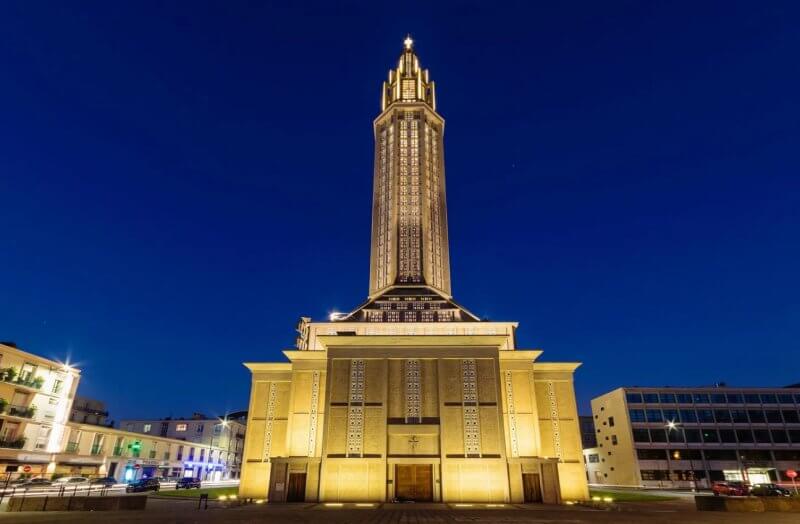
The gloomy interior of the church is made in the neo-Gothic style: gilded ceilings and walls, colorful stained glass windows, a huge painted altar in the center of the hall. The temple is beautiful at any time, but in the light of lanterns, it makes a truly indelible impression. The construction of the building was completed in 1957 and became the final point in the reconstruction of the city. Now it hosts a lot of religious events.
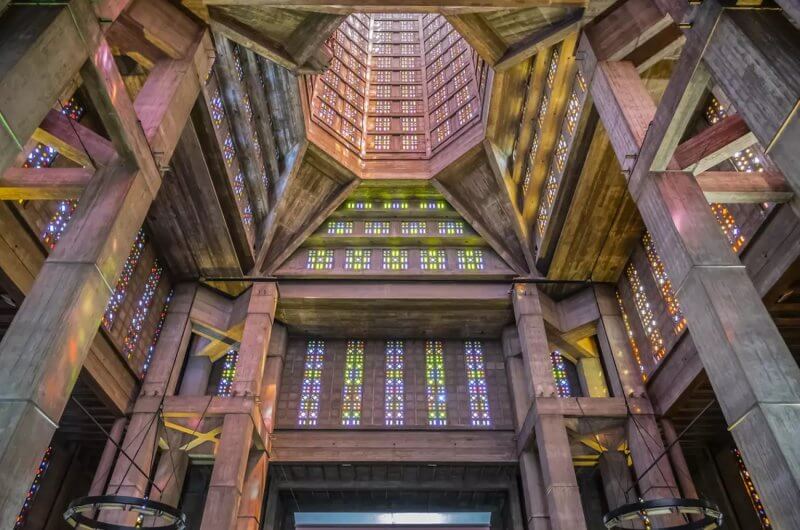
- Address: 130 Bd François 1er, 76600 Le Havre, France.
- Official website: www.lehavre.catholique.fr.
MuMa, Andre Malraux Museum of Modern Art
Museum of Modern art André Malraux – local art center. The museum, which occupies a beautiful glass building, is known throughout Europe. Its walls contain a rich collection of Impressionists, precious ceramics from all over Normandy, ivory products, etc.

In the museum you can see the works of Monet, Bodin, Dubour, Degas, Manet, Renoir and other outstanding artists. The museum’s oldest collection of paintings boasts the famous “Wave” by Gustave Courbet. There is also a restaurant in the building, offering views of the harbour and the English Channel.
- Location: 2 Bd Clemenceau, 76600 Le Havre, France.
- Opening hours: Tuesday-Friday-from 11: 00 to 18: 00; Saturday-Sunday: from 11: 00 to 19: 00; Monday-closed. The museum is also closed on 25.12, 11.11, 01.01, 01.05 and Easter Monday.
- Prices: full fare – 7€; with a discount for preferential categories-4 €.
- Official website: www.muma-lehavre.fr.
Notre-Dame du Havre Cathedral
Another significant historical landmark of Le Havre is Notre-Dame, located one block from the port, and a small tower nearby. The cathedral, built in the 16th century, can safely claim the title of the oldest building in the city. The structure, made in the Baroque style, was able to survive the war only for one reason-the British pilots used it as a landmark.
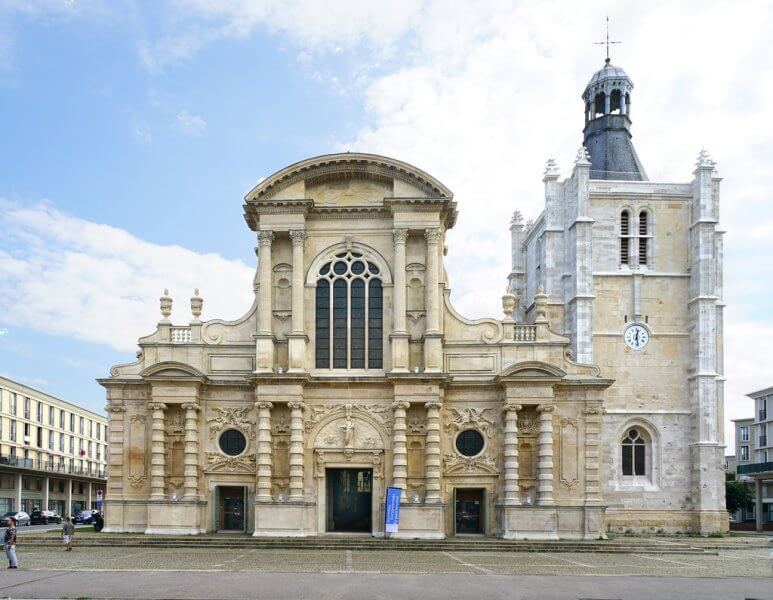
Due to the complex structure of the ground, the cathedral has a small height – the scale is not surprising, but it is very interesting to consider the details. Inside there are organs donated by Richelieu.
- Address: Rue de Paris, Le Havre, France.
- Opening hours: the cathedral is temporarily closed.
- Official website: www.notredamedeparis.fr.
Hanging Gardens
Le Havre is a very green city, with many parks and gardens (about 2 thousand acres). One of them is Les Jardins Suspendus, the hanging gardens that opened in 2008. They are located in the Sanvic area inside the ancient fort of Saint-Adresse and cover a huge area. One of the observation decks offers a beautiful view of the Lower Town, the sea and the port. Walking through the fortress’s gardens and fortifications, you can discover rare flora and visit greenhouses planted with plants from all over the world (3,700 species).
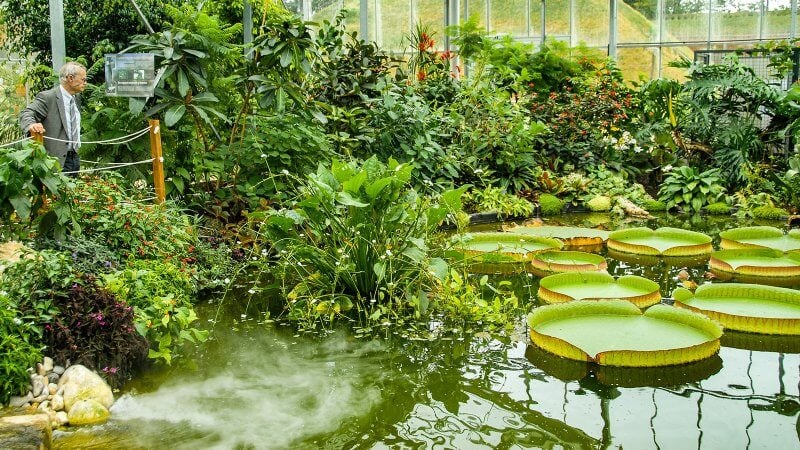
- Location: 29 Rue Albert Copieux, Rue Copieux, 76600 Le Havre, France.
- Opening hours: April-September-from 09: 00 to 20: 00; October-from 09: 00 to 19: 00; November-March – from 09: 00 to 17: 00.
- The gardens are open every day. Collectible greenhouses have their own work schedule. More details can be found on the official website www.lehavre.fr/annuaire/les-jardins-suspendus.
- Admission is free.
Japanese Garden
The Jardin japonais du Havre is another well-known natural attraction located next to the city’s waterfront. The Japanese garden is named because the best designers and architects from Japan were invited to Le Havre for its design. Despite its popularity, this place can be called one of the most peaceful and peaceful. Numerous lakes with magnolias, bamboo fountains, bridges, stone sculptures, colorful flower beds, gazebos-all this creates a romantic atmosphere and contributes to an unforgettable holiday.
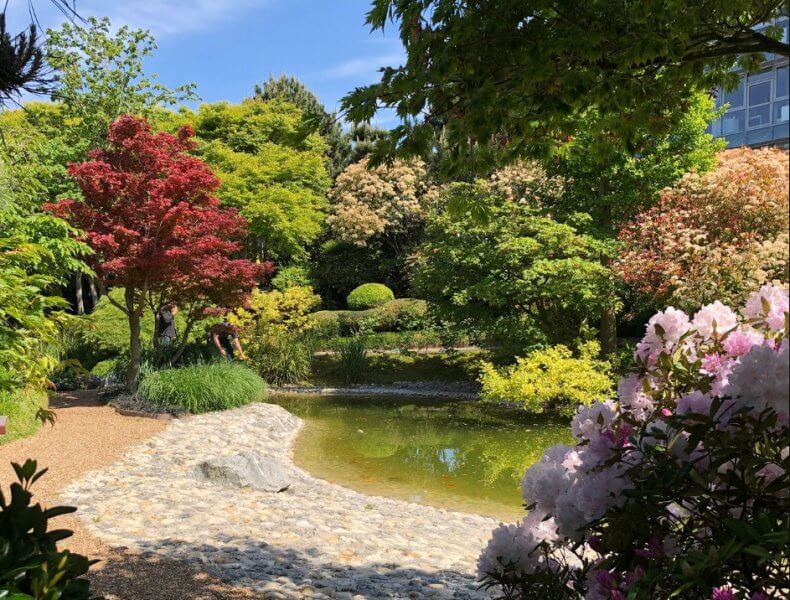
In addition, there are regular tea ceremonies. If you want to participate in them, just find a ” toy ” tea house hidden in the depths of a green oasis.
- Location: Chau. Lamandé, 76600 Le Havre, France.
- Opening hours: Monday-Friday – from 10: 00 to 12: 00 and from 14: 00 to 16: 00; Saturday, Sunday-closed.
Le Havre beach and promenade
The local beach is a two-kilometer stretch of shore with a pebble surface. Despite the fact that the English Channel is not happy with high temperatures (on one of the July days the water in the sea was only 16 degrees), there are a lot of tourists here. Neither locals nor tourists make this a problem. If you swim coolly, you can sit by the water, sunbathe, breathe iodine-rich air, listen to gulls.
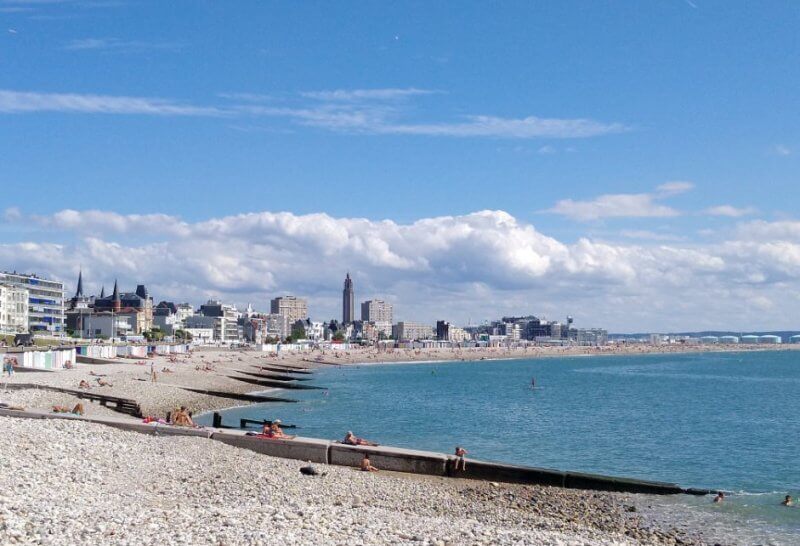
There is also a boardwalk along the entire coastline with a large number of fish taverns. Here you can taste the most delicious mussel soup, enjoy the taste of aromatic local cheeses and pass the evening with a mug of apple cider or a glass of calvados. The cafe’s menu is only in French. The staff also does not speak English, so follow the pictures – the soup is served in black pots with lids.
At the top of the beach, you can see cabins that are rented out daily or hourly. There are no traditional changing booths in France. If you can’t afford to pay for a large cabin, you’ll have to change your clothes right on the beach.
Where to stay?
A huge rock mass divides Le Havre, a city in France, into 2 conventional parts.
Upper one
Located on the rocks. There are very few tourists here, mostly well-to-do Normans, so housing is very expensive. But in the Upper Town you can find many parks, squares and gardens.
Lower one
It is better to rent a hotel in Lower Le Havre, because it is here that the historical quarter, the periphery and the port are located. The area can be explored on foot in 3-4 hours, so both expensive and budget accommodation options are concentrated near the city’s attractions. Almost half of them are located near the boulevards of France and Clemenceau, the streets of Paris and Cote Est Socans, the Place de la Repubblique (railway station). Another important feature of this place is the abundance of harbors, bridges and canals, which is why the Lower City is often compared to Venice.
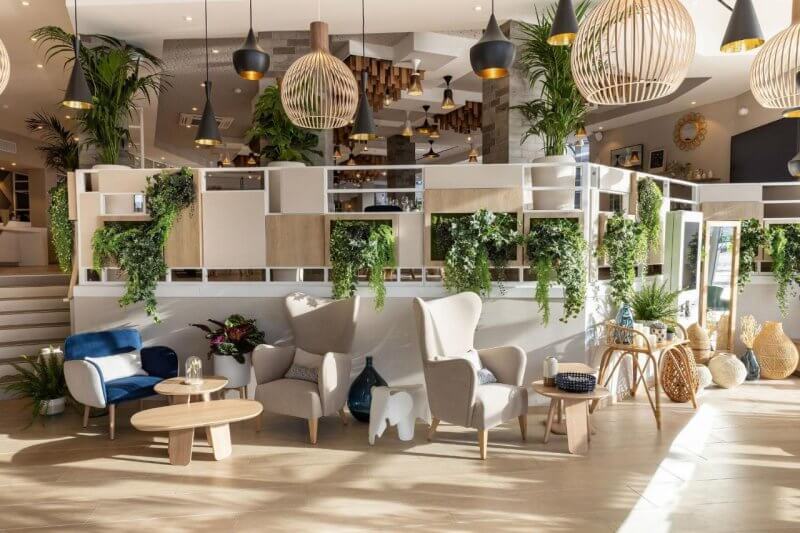
Parts of Le Havre are connected by a road tunnel and a funicular. It costs 50 euro cents to get there. Le Havre is one of the most expensive resorts in France. You are unlikely to find truly inexpensive housing here. Prices depend on the season and the conditions offered. So, a night in a double room of a 3* hotel starts from 50 €. If you take a 4* hotel, its cost is at least 95 €.
Despite the large selection, it is better to rent a place to stay 2-3 months before the trip. Firstly, it is cheaper, and secondly, good options are booked almost immediately.
How to get there from Paris?
Le Havre is served immediately by 2 airports that accept local and international flights. However, most tourists prefer to use land-based modes of transport-trains and buses. They are most convenient to drive from Paris. We will consider each option.
Method 1. By bus
Dozens of buses of different carriers run daily between the French capital and Le Havre. On their websites, you can choose a suitable flight and pay for your ticket in advance (starting from €9).
Depending on the company, flights depart from the following locations::
- Eurolines-buses of this carrier run from 10 am to 6 pm. For a round-trip ticket, you need to pay 18€. In the salons there is a toilet, access to Wi-Fi is provided free of charge;
- FlixBus – CDG Airport, Porte Maillot and La Defense Metro. The time of the first departure depends on the day of the week and the season. The very first routes depart at half-past 7 am, the latest-at half-past 10 pm. The ticket costs from 9 to 17 €. The journey takes 2.5 hours;
- Ouibus-sent from La Defense. Most often, the first flight is made at half past eleven, the last-at 20: 00. Arrival in Le Havre is at 14: 30 and 23: 00, respectively.
It is better to book your tickets in advance. They may not be available on the dates you need.
Method 2. By train
Direct TER trains from Paris to Le Havre run from 7 am to 10 pm. In the opposite direction – from 6 to 8. The road takes just over 2 hours. You can buy a ticket not only at terminals and ticket offices, but also online. The most popular site is Loco2. Among other things, you can use it to set a route, calculate the time and specify the train schedule. Tickets start at €19. A reduced fare is available for passengers under 26 years of age.
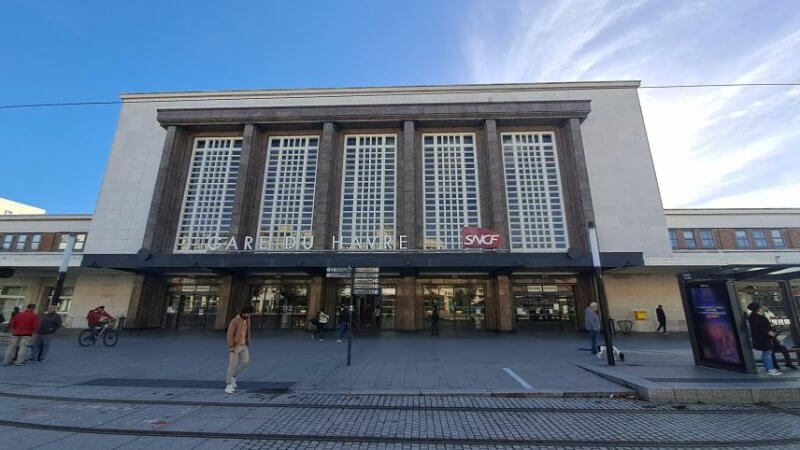
Trains arrive at the Gare du Havre train station, located in the Lower Town. This is one of the few architectural objects that managed to survive the war. Up to one of Le Havre’s landmarks, the Church of St. St. Joseph’s Cathedral can be reached in 20 minutes on foot. Notre Dame is also nearby.
Interesting facts
Le Havre, France is very old, so you will probably find a lot of interesting facts in its history. Here are just a few of them:
- The local tram line is almost the most convenient in the country. It often intersects with bus routes, allowing easy access to the city’s main attractions.
- The city became the prototype of the book Bouville from the novel “Nausea” by the writer Jean-Paul Sartre.
- Its first name, Franciscopolis, was given to the resort in honor of the French King Francis I. It was renamed Havre-de-Grace (Grace Harbor) much later.
- During the construction of Le Havre, the craftsmen did a great job. They separated the wreckage of the houses by color and material, ground it into sand and added it to concrete. If the building’s cladding glints in the sun, these are pieces of glass left over from broken storefronts and windows.
- In 1949, Le Havre was awarded the Legion of Honor.
Fontainebleau – luxury residence of the kings of France

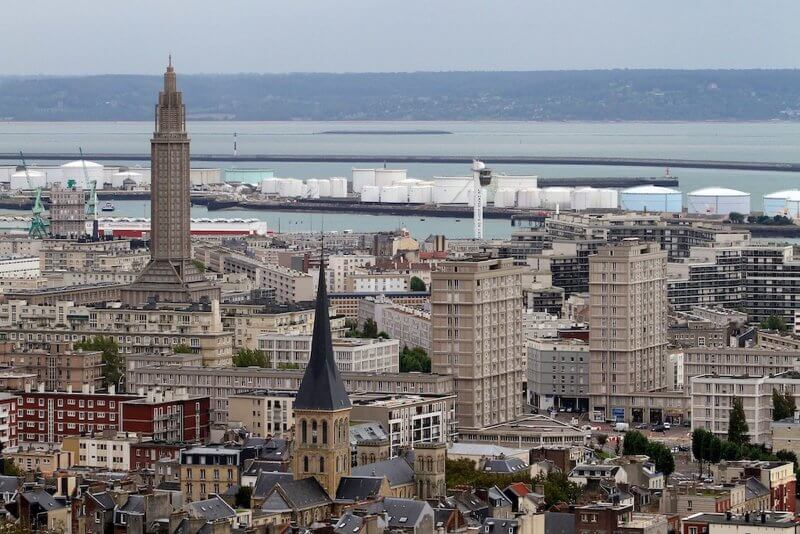
![Le Havre, France - City Walk [4K UHD]](https://waypointwonder.com/wp-content/cache/flying-press/ae0f791b2a91da5e17df99d6feba4413.jpg)